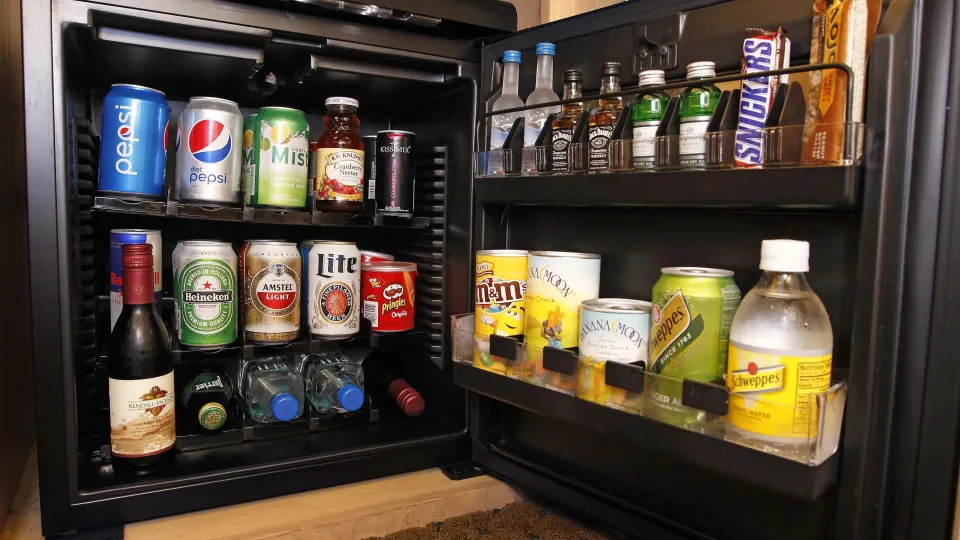Streamlining the Customer Journey: Decrease Friction. Increase Sales

For any business owner or c-level, it is easy to become number to your customers' journey. From time to time, its critical to traverse that journey from start to finish to note any nuisances, friction, or pain points that can be mitigated.
For this lesson, the perfect example is the hotel minibar. All the effort is abstracted away in the booking process. The hotel has your payment information and the inventory was stocked prior to your arrival even without you having to request it. It is this beautiful captive audience that probably didn't pack a cooler full of the snacks they tend to gnosh on at home. And now they are alone in the room with that fridge, summoning them like a siren to the rocks, to partake of any of the predatorily priced items within.
Make your product like the items in that minibar. Make it effortless for the customer to add more things to the final bill. Remove all friction.
Friction refers to any obstacle, inconvenience, or inefficiency that hinders the smooth flow of the customer journey. From initial interest to final purchase, every step should be optimized to reduce friction and provide a seamless experience. By doing so, businesses can create a positive environment that encourages customer satisfaction, loyalty, and ultimately, increased sales.
So, how can businesses decrease friction and optimize the customer journey? Here are some strategies:
1. Simplify and streamline the purchasing process
Complex and lengthy checkout procedures often result in abandoned shopping carts. By simplifying the purchasing process, businesses can remove unnecessary steps and reduce the time and effort required to complete a purchase. Implementing guest checkout options, offering multiple payment methods, and minimizing form fields can significantly enhance the user experience.
2. Optimize website and mobile experience
A slow-loading website or a non-responsive mobile interface can frustrate potential customers and drive them away. Optimize website performance by minimizing page load times, ensuring mobile responsiveness, and providing clear and intuitive navigation. Utilize user-friendly design principles to make it easy for customers to find what they are looking for and complete their purchase seamlessly.
3. Provide transparent and comprehensive product information
Customers appreciate having all the necessary information readily available to make an informed decision. Ensure that detailed product descriptions, specifications, pricing, and availability are clearly displayed. Including customer reviews and ratings can also help build trust and address potential concerns.
4. Offer proactive and responsive customer support
Effective customer support is essential in reducing friction. Offer multiple channels for customers to reach out for help, such as live chat, email, or phone support. Provide timely and personalized responses to inquiries, addressing any concerns or issues promptly. The goal is to make customers feel supported throughout their journey, minimizing any obstacles or uncertainties they may encounter.
5. Streamline order fulfillment and delivery processes
The post-purchase experience matters as well. Streamline the order fulfillment and delivery processes to ensure that products are delivered on time and in excellent condition. Offer order tracking capabilities to keep customers informed about the status of their shipment. Providing a hassle-free returns and exchange policy can also boost customer confidence and satisfaction.
6. Continuously gather and act on customer feedback
Regularly seek feedback from customers to identify areas of improvement. Analyze customer complaints, suggestions, and reviews to identify any pain points or areas of friction in the customer journey. Actively address these concerns and make necessary changes to enhance the overall experience.
Decreasing friction in the customer journey is not a one-time effort. It requires ongoing commitment and attention to detail. By continuously monitoring and improving the customer experience, businesses can build a reputation for convenience, reliability, and exceptional service. This, in turn, leads to increased customer satisfaction, loyalty, and ultimately, higher sales figures.
In the competitive marketplace, where customer expectations are constantly evolving, businesses that proactively address friction and prioritize the customer journey will stand out from the crowd and enjoy long-term success.
